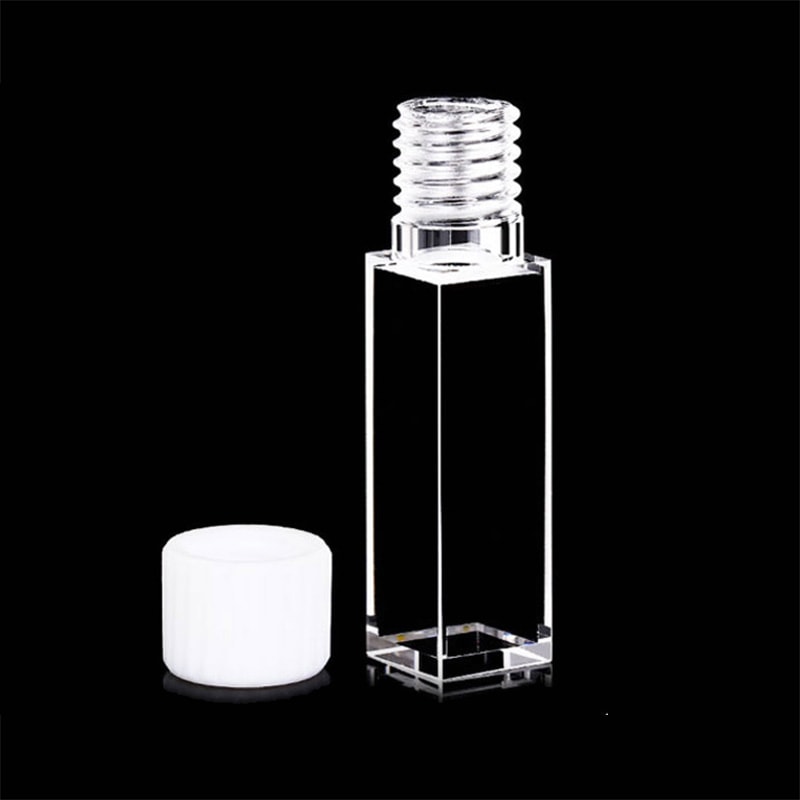Spectrophotometry is an essential element of discovery and scientific advancement It is a method of revealing the secrets of light absorbance and transmittance in particular wavelengths. At its heart lies the cuvette, a simple but critical vessel that holds the samples for analysis. Although they may appear straightforward but their intricate design including the length of the path to the selection of materials that they are made of, can provide precise information about the concentration of substances and high-quality. Explore the world of cuvettes and the dimensions they take. They can affect the results of every experiment.
Power of Cuvette Pathlength
Imagine a beam of light passing through a specimen. What happens will depend on the cuvette’s path length which is the length of time light traverses through the liquid. For many laboratories, a cuvette that is 1 cm length is ideal because it strikes the right balance between sensitivity as practicality. What’s the reason? The longer the path of light more of light that is absorbed. Thus, the signal will be amplified in sample that is diluted. However, for highly concentrated solutions such as proteins or nucleic acids shorter paths can be a game changer. This decreases dilution and helps preserve precious samples, as well as decreasing the preparation time. What can we learn from this? It’s an art match the length of the path to specifications for the sample. This increases the accuracy.

Image credit: cuvet.co
Cuvette Dimensions and Size Cuvette Dimensions and Size: There’s More than you think
The cuvette’s size doesn’t only concern how much liquid fits inside, but also how the vessel interacts with the spectrophotometer. Cuvettes are available in a assortment of shapes and volumes, each tailored to specific tasks. Semi-micro cuvettes are smaller in size but have more robust walls. They are perfect for tiny sample sizes. Thick walls allow light to pass through the sample, without losing even a single drop. This is an enormous improvement over the standard cuvette. It requires the least amount of steps to pipette. It also is less susceptible to errors and delivers results that are accurate. It’s an innovative tweak that makes it clear that size isn’t just an number but rather a method of doing business.
The 1cm Path Length Cuvette The 1 cm Path Length Cuvette is a lab favorite
Why does the 1 cm path length cuvette reign supreme in so many experiments? This is the perfect spot for biological tests where every milliliter counts. This design is a classic and provides consistent absorbance readings without overwhelming the detector, making it the ideal choice for anything from DNA quality checks to enzyme assays. It’s not the ideal choice for every situation. It’s not a single-size hero. It is essential to choose the appropriate instrument, not the one you feel most comfortable using. A wrongly matched instrument is similar to a cuvette not right for the job.
Material Matters Beyond Path and Size
Cuvette dimensions tell only half the story. Material selection is the final word. Glass and quartz cuvettes are notable for their exceptional transmission, letting light zip through with no interference. Cuvettes made of glass are tough and reusable, making them ideal for spectroscopy. However, plastic cuvettes offer affordability and convenience. You can use them and then throw them away. No need to clean and there is no chance of cross contamination. They are ideal for testing in aqueous fluids or speedy DNA/RNA tests. The price? The trade-off? Quartz is the most preferred material for those who are adamant about purity, whereas plastic is the material of choice for those who are practical.
Perfect Practice and Precision
Cuvettes are adaptable and versatile. Combining spacers with shorter lengths of path allows the handling of very concentrated samples while larger vessels can handle large amounts. The quality of the results are affected by the length of the path and size, as well as the material employed. Labs are measuring one of the most rare proteins. A semi-micro cuvette which has a shorter pathway could prevent dilution headaches and give accurate results quickly. Compare that with a careless change of cuvettes in middle of an experiment and you’ll observe that numbers decrease. This is a great reminder that even the smallest things can have a significant impact on the spectrophotometry.
Cuvettes are tiny, but they play a big role. From the 1cm path length cuvette to custom dimensions they can bridge the gap between samples and knowledge. The right cuvette can transform a good measurement, whether you are chasing purity or concentration and precision, into a fantastic measurement.